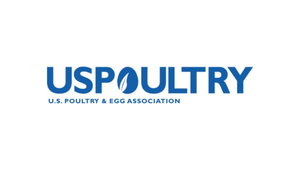Center to address sustainable grazing management of drylands and alternative irrigation strategies for crop production.
September 9, 2020

The University of Nevada-Reno (UNR) College of Agriculture, Biotechnology & Natural Resources (CABNR) announced that operations have begun for a new Great Basin Research & Extension Center in Eureka County, in a new initiative for rural Nevada.
UNR said the center will address the related issues of sustainable grazing management of dryland rangelands, livestock and crop production under water-limited environments and alternative water and irrigation strategies for crop production.
CABNR is spearheading the enterprise on a 644-acre ranch in Diamond Valley near Eureka, Nev., along with several grazing permits on Bureau of Land Management lands in the Diamond and Fish Creek mountains surrounding Diamond Valley.
“This operation will address real-world problems through research and extension, providing useful knowledge to the ranchers and farmers of Nevada,” CABNR dean Bill Payne said. “It’s also a Nevada showcase, as much of the world looks like this, and the knowledge we generate here will be useful throughout drylands of the world.”
Drylands are defined as areas in which lack of moisture limits crop and/or pasture production during part of the year, and they generally occur in arid, semi-arid and dry sub-humid regions of the world, UNR said in its announcement. Drylands constitute about 41% of the Earth’s land surface, including most of Nevada.
Payne added that the start of operations at the center coincides with the college's launch of the new International Center for Sustainable Dryland Agriculture. He noted that 2.5 billion people, or 30% of the world’s population, live in drylands and face several common challenges, including desertification, salinization, soil nutrient depletion, poor water quality, invasive species, declining biodiversity and soil erosion.
The Great Basin Center in Eureka and the International Center for Sustainable Dryland Agriculture were created to address such issues at state and international levels, UNR said.
The Great Basin Center found its new home through the generous gift of the Ruby Hills Mining Co. LLC, which is donating the ranch to the university.
“We really appreciate the support and generosity from Ruby Hills Mining for our new center and the community,” Payne said. “It makes this important project possible, and we are proud to have them associated with the center.”
Payne said the center has three main focuses: (1) sheep genetics and management, (2) range restoration and improvement and (3) water-efficient cropping systems.
“This fits exactly into the goals of the experiment station: contributing knowledge and meeting the needs of stakeholders,” said Chris Pritsos, the college’s associate dean for research and director of the Nevada Agricultural Experiment Station, which is overseeing the operation. “Ranchers and farmers have unique challenges and problems that the research faculty can help them address and solve.”
Sheep flock
At the center of the operation is the Rafter 7 sheep flock, which the university purchased in July. The sheep include Merino purebreds and Rambouillet/Merino crossbreeds that were initially developed about 30 years ago under the direction of Hudson Glimp, professor emeritus of animal biotechnology at the university, in order to improve the sheep industry in Nevada and the U.S. The effort was supported by the Weigand Foundation.
The sheep are extremely well adapted to rangeland production and to producing fine wool despite the harsh climate, UNR said. Genetically, the herd has made contributions to the western U.S. and international sheep industries.
“Right now, we are busy with getting the ranch and center established,” Pritsos said. “We’ve already built a new lambing facility. We’ll take a year to get the operation fully going. Right now, we’ll operate as a production herd, selling rams, lambs and wool.”
The Great Basin Center will also help fund more research and more programming through extension and other projects that will adapt to the needs of the community.
The center will ultimately include an administration, teaching and laboratory facility; herder and labor housing; refurbished domestic/stock well and water system; modernized irrigation facilities, and redesigned and reconfigured sheep corrals. The ranch has three 120-acre pivot sprinklers for producing alfalfa hay and other forage crops, a cattle feedlot and a dryland crested wheat pasture, UNR said.
At an elevation of 6,481 ft. in central Nevada, the center is about 250 miles from the university’s main campus in Reno and about 100 miles southeast of the Gund Research Ranch, which also is managed by the Nevada Agricultural Experiment Station.
“One of our goals with this project over the past two years has been to get us out of the Reno-centric perspective and expand our presence throughout the state,” Pritsos said.
Payne agreed, adding, “It is important to understand that the experiment station has a statewide mandate, similar to extension. It’s been decades since the college has taken an active new step with a facility of this size outside of the Reno-Sparks area, but this is what land grants are supposed to do: work elsewhere, around the state.”
At the helm of the Great Basin Center operation is Gary McCuin, interim director of the center and longtime extension educator for Eureka County. With this new assignment, he’ll be splitting time between the two positions.
“I see the center as a means of achieving extension’s mission through applied research and operations of farming, rangeland and livestock production and conveying the knowledge gained through these endeavors to stakeholders in Nevada, the West and globally,” McCuin said.
You May Also Like



